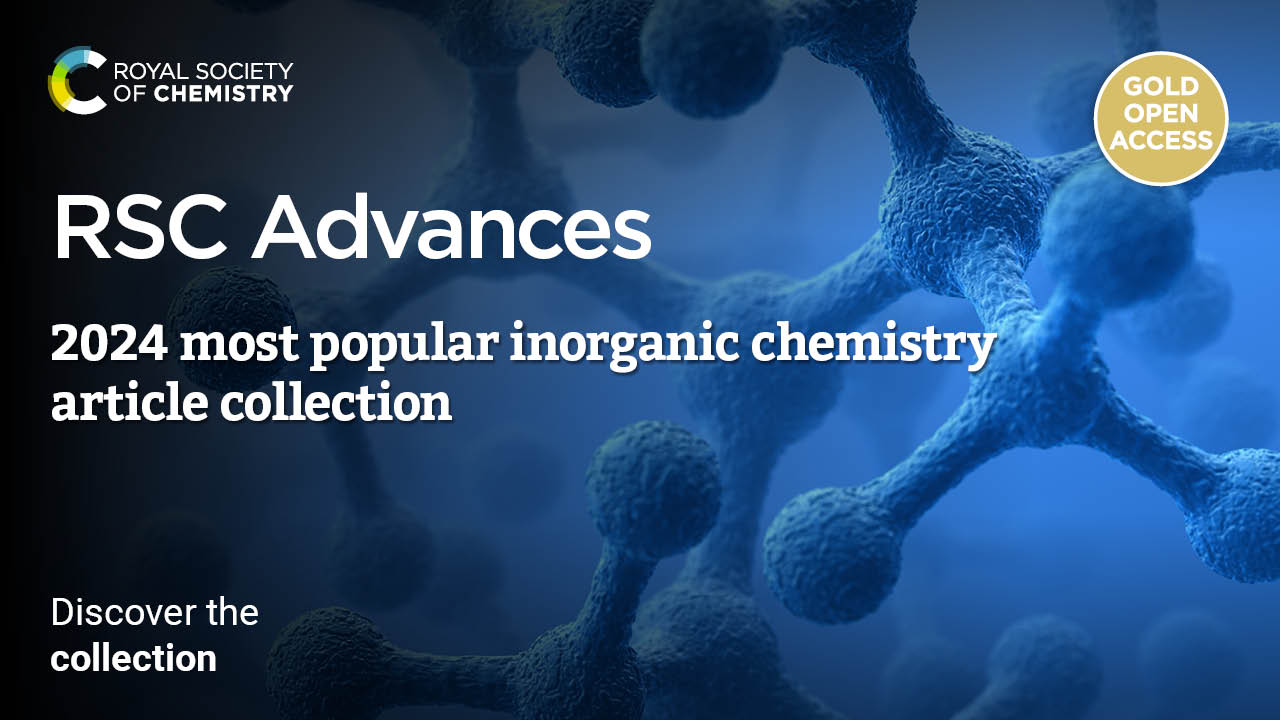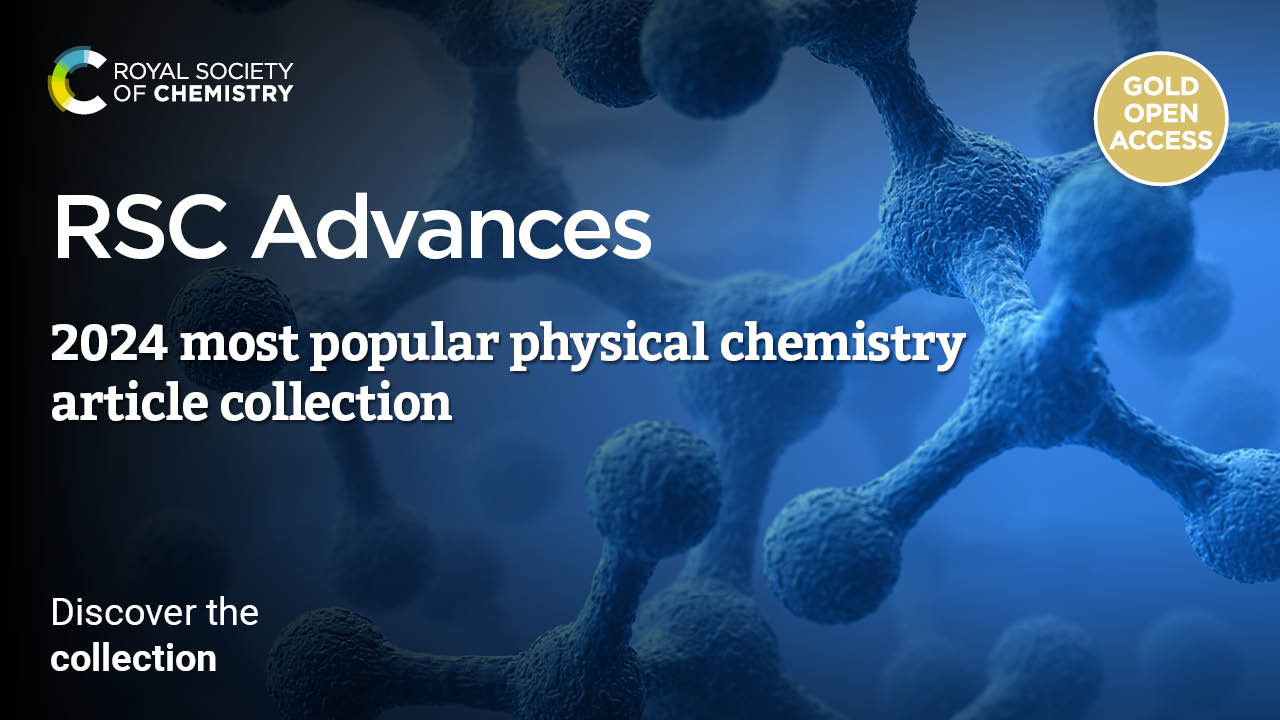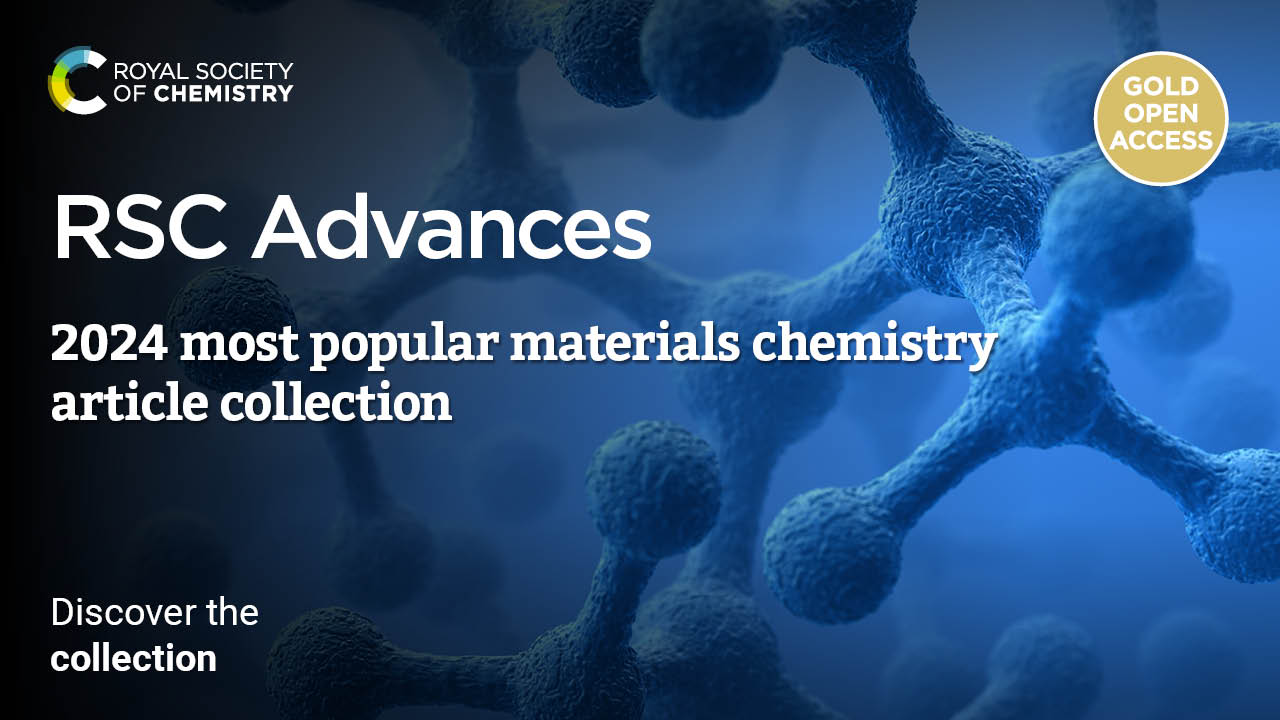Looking back over 2024, RSC Advances is delighted to present a collection of most popular articles in the area of energy chemistry.
Featured articles
Hydrogen production, storage, and transportation: recent advances
M. M. Rampai, C. B. Mtshali, N. S. Seroka and L. Khotseng
RSC Adv., 2024, 14, 6699-6718
Pt/C catalysts synthesized in a commercial particle atomic layer deposition system enabling improved durability in fuel cells
Fiona Pescher, Julian Stiegeler, Philipp A. Heizmann, Carolin Klose, Severin Vierrath and Matthias Breitwieser
RSC Adv., 2024, 14, 32358-32369
Fe–Ni porphyrin/mesoporous titania thin film electrodes: a bioinspired nanoarchitecture for photoelectrocatalysis
Facundo C. Herrera, Rolando M. Caraballo, Priscila Vensaus, Galo J. A. A. Soler Illia and Mariana Hamer
RSC Adv., 2024, 14, 15832-15839
We hope that you enjoy reading through our selection.
We would also like to introduce you to the RSC Advances Associate Editor group who handle submissions in the area of energy chemistry. They welcome you to submit your latest advance in energy chemistry to RSC Advances.
A brief overview of RSC Advances
- one of the world’s largest gold open access chemistry journals
- international readership
- fast publication times ensure rapid visibility of your work
- all submissions are handled by a team of associate editors, who are established scientists actively working in the area
- all articles published in RSC Advances have been through the full peer review process
- the APC is among the lowest in the industry
- the Royal Society of Chemistry is a not-for-profit publisher – all surplus is re-invested back into the global scientific community
Find out more about RSC Advances and the benefits of publishing with us at rsc.li/rsc-advances.
Submit to RSC Advances today! Check out our author guidelines for information on our article types or find out more about the advantages of publishing in a Royal Society of Chemistry journal.
Keep up to date with our latest Popular Advances, Reviews, Collections & more by following us on X. You can also keep informed by signing up to our E-Alerts.





















